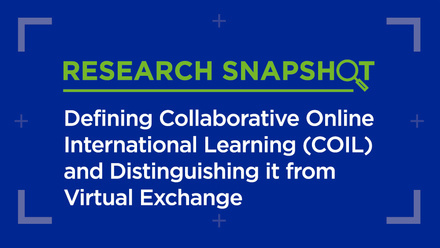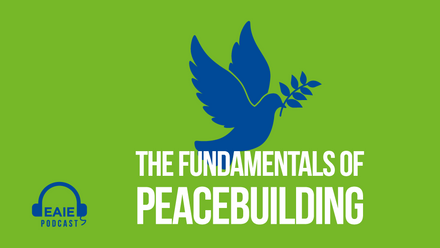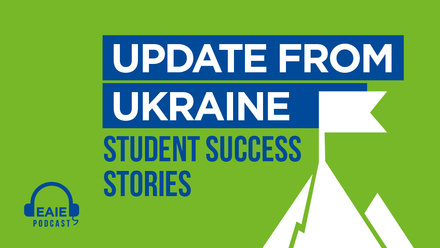How COVID-19 is sending Armenian education online

Due to the coronavirus outbreak, all educational institutions in Armenia were asked in early March to switch to distance learning. Currently, most institutions are still struggling with the logistics of this fundamental change, as the online delivery of education has not been practiced widely in the country previously.
History has proven time and again that in crisis situations, people become more creative and bring original ideas to life. This might also be the situation with the COVID-19 outbreak in Armenia – while the pandemic will undeniably take a heavy toll on public health, in the world of higher education, it may also illuminate creative new pathways forward after the pandemic.
Online learning in Armenia: a short history
Although digitalisation has been a priority for education in Armenia since 2009, few plans have been implemented in higher education, neither in digitalisation of administering higher education institutions nor in integrating digital skills into teaching and learning activities.
In 2010, the Government of Armenia took several measures to implement the provision of online courses and distance learning for higher and postgraduate professional education. Then, in 2012, the World Bank financed a project in Armenia aimed at developing a web-based ‘Education Management Information System’ (EMIS), with the purpose of monitoring and improving the operation of education institutions in Armenia. The EMIS was designed to be implemented at various educational levels, namely pre-school education, secondary education, specialised education and tertiary or higher education. It is a complex and data-rich system with great potential for strengthening planning and monitoring at all levels of education.
The goal of the EMIS project was to streamline the core business processes by enabling institutions to digitalise such functions as the development of work plans, curricula, schedules, the provision of graduation certificates and diplomas, and academic degree awards. Through the system, all educational institutions in the country, including regional ones, should have been able to collect and report educational performance data, thereby aiming to improve the quality, transparency, and monitoring of the Armenian education system, as well as to support informed policy development.
Easier said than done
According to the Government Program of Armenia for the period of 2019–2023, the Education Management Information System should become fully operational at the end of the year of 2020. Today, however, it is 2020, but the EMIS is not yet active at the tertiary level, while the system has only been operational for secondary education since 2019.
Many of the teachers who will be tasked with developing and delivering online education have no prior training in using these digital tools
Universities are resistant to the programme, as it will be an additional budget burden to hire new staff. Yerevan State University, which draws the largest percentage of the student population in the country, argues that it already has its own data collection system, which in incompatible with the new EMIS being rolled out.
Aside from the resistence from universities, there are other practical constraints to the implementation of this Education Management Information System in higher education institutions. For example, many of the teachers who will be tasked with developing and delivering online education have no prior training in the use of the kinds of digital tools they're now being asked to work with. In addition, the education management system in question was developed several years ago and thus needs an update as it does not meet the current needs of the higher education sector.
Going digital during COVID-19
As the situation became crucial with the COVID-19 crisis, educational institutions in Armenia were asked by the government to transition to remote delivery of education to ensure the continuity of studies. As might have been expected, this order clashed with the tangible realities of day-to-day work in education institutions.
Despite scarce capacity, universities and the government are working hard to find various short-term solutions to get through the situation. The solutions introduced by schools and universities seem to be a mixture of online, remote, distance and digital learning modes, such as by organising lessons broadcast via a new educational TV channel called ‘Hybrid Edu’; using tools like Zoom, Moodle, Blackboard, Google Hangouts and WhatsApp; and integrating materials from MOOCs via Coursera.
These developments will shake the foundations of education systems around the world, but it might also equate to a crucial step forward
The actions taken thus far are temporary solutions geared towards short-term results with an aim to solve the issues that have arisen from the current moment. But it can become a good exercise for universities, for evaluating their current capacities and identifying their own problems. It looks like Coronavirus may be a more effective stimulus for universities to develop a quality distance learning culture than any government strategy has been thus far. Nature is forcing humanity to act with agility, a skill that suffers when we become too comfortable.
From short-term solutions to long-term change
The education currently being provided in Armenia by teachers at the secondary and tertiary levels – teachers who have not been trained in the use of digital tools – surely will be of less than optimal quality for now, and faraway from something that could be rightfully called ‘online learning and instruction’. But, it might play a fundamental role for revolutionising stagnant mindsets and breaking through resistance to the change.
Once this crisis has passed, many education systems will be spurred to craft new agendas and bring more innovative and original ideas into play. In some sense, these developments will shake the foundations of current education systems around the world, but it might also equate to a crucial step forward.






